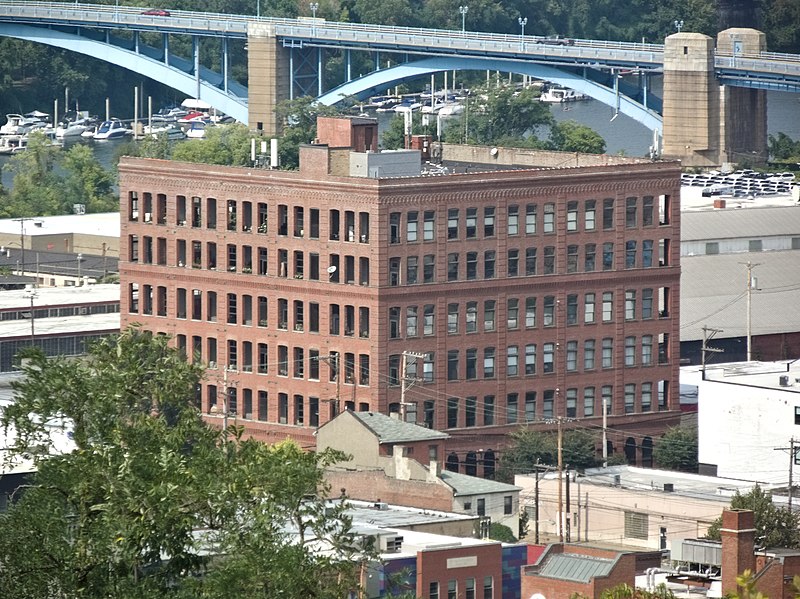

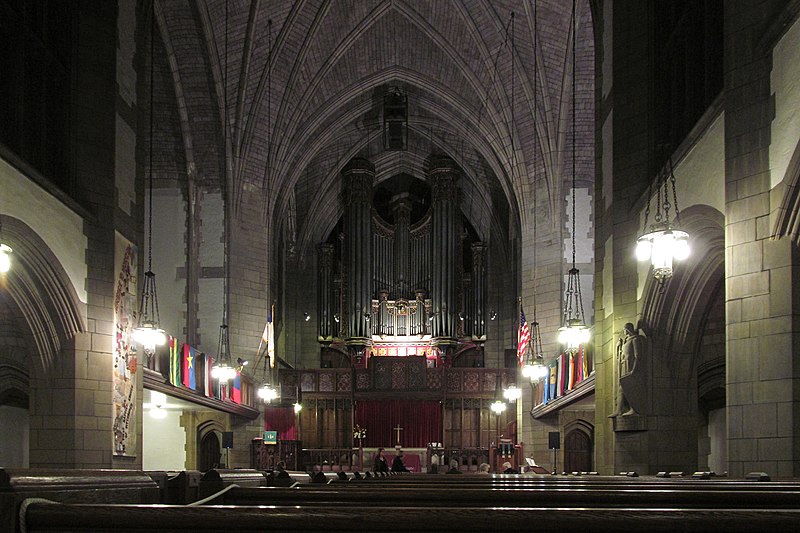
First Baptist Church, built in 1912, was designed by Bertram Goodhue, one of America’s greatest Gothic architects, and also the designer of the Cheltenham typeface, familiar today as the headline face of the New York Times. The Perpendicular Gothic interior includes one of the most visually beautiful sets of organ pipes in the city. At night everything takes on an added air of ancient mystery.




Now St. Elizabeth Ann Seton Church of St. Raphael Parish, because the history of parish consolidation in Carnegie is complicated even by Catholic Pittsburgh standards. Built in 1881, this church was out of commission for a while after the Hurricane Ivan floods in Carnegie, but it is now restored and expanded, and in fact is the only remaining Western Catholic church in Carnegie. (There’s a Byzantine-rite Ukrainian church, too.)


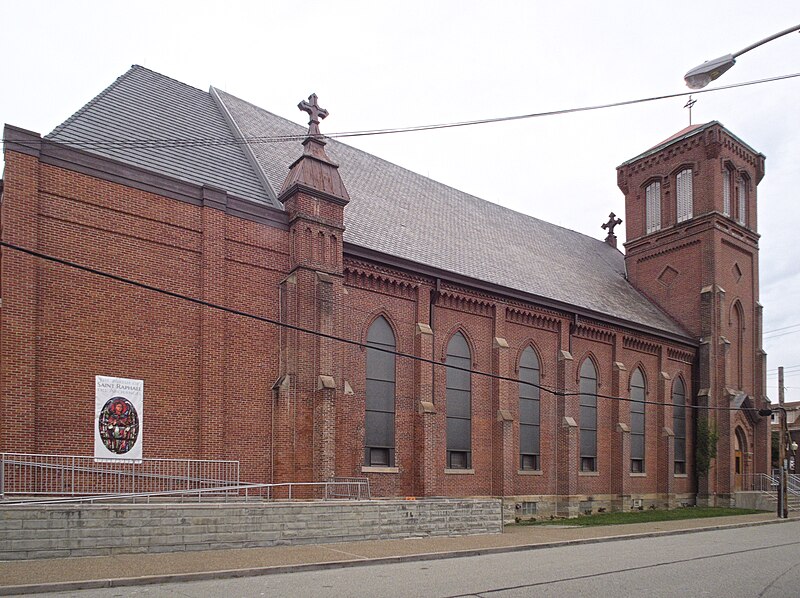
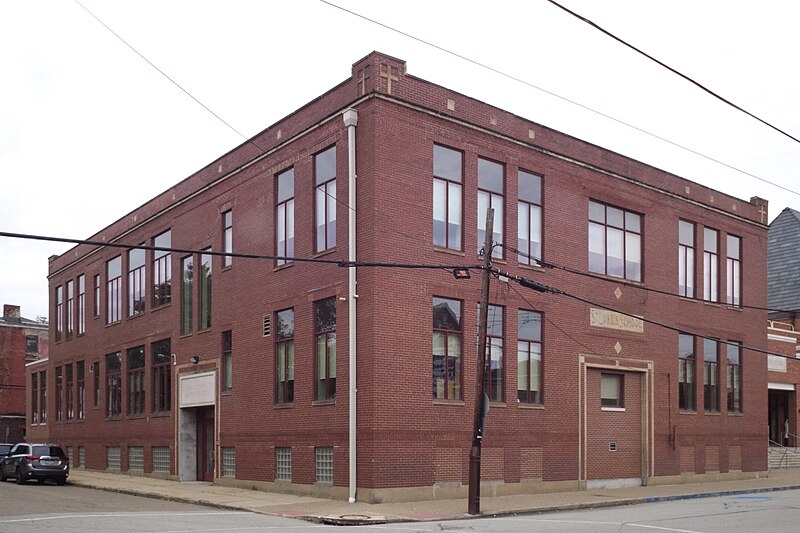
The parish school behind the church closed some years ago, but the building still belongs to the church and has been adapted to other uses, including Sunday school and offices.
Addendum: The architect of the school was Albert F. Link.1


Here is another entry in our expanding catalogue of churches with the sanctuary upstairs. Now the Northside Church of God, this church, built in 1890, is a typical rowhouse-neighborhood church, making the most of its small lot. The mansard roof over the tower section looks later; it is possible that a tower or spire was damaged and replaced.

We can just make out the not-quite-obliterated name “St. Paul’s” above the date.


This cornerstone was obviously added later, and the most probable explanation is that it marks the date when the church passed out of the hands of the Lutherans.


If old Pa Pitt were more ambitious, he would remove those utility cables from the photograph, or from the street if he were more ambitious than that.
Resurrection Church was built in 1939 in an interesting modernist Gothic style, anticipating the streamlined modernist Gothic that would have a brief vogue after the Second World War. This design managed to give the congregation a sumptuous Gothic interior while keeping the exterior outlines starkly simple. The main entrance, for example, is recessed far into the building, so that only by standing right in front of it can we see the elaborate Gothic tracery and inscription.
An update: The 1939 church was designed by William P. Hutchins, who gave us many distinguished late-Gothic churches and schools, including St. Mary of Mercy downtown.



One of the side entrances.

“Light of the World” relief over the side entrance.

Before 1939, Resurrection Parish worshiped in the school next door, which was built in 1909. As usual, the Brookline Connection site has a thorough history of Resurrection Parish. From it we learn that the school was built in stages: the first two floors of the front were built first, with the rear and top floor added later. (Addendum: We have found that the architect of the second-floor addition was John T. Comès.1 This strongly suggests that Comès was the architect of the original building.) We are also told that the sanctuary was on the “ground floor,” but as we see from this picture, “ground floor” can be a slippery concept in Pittsburgh.

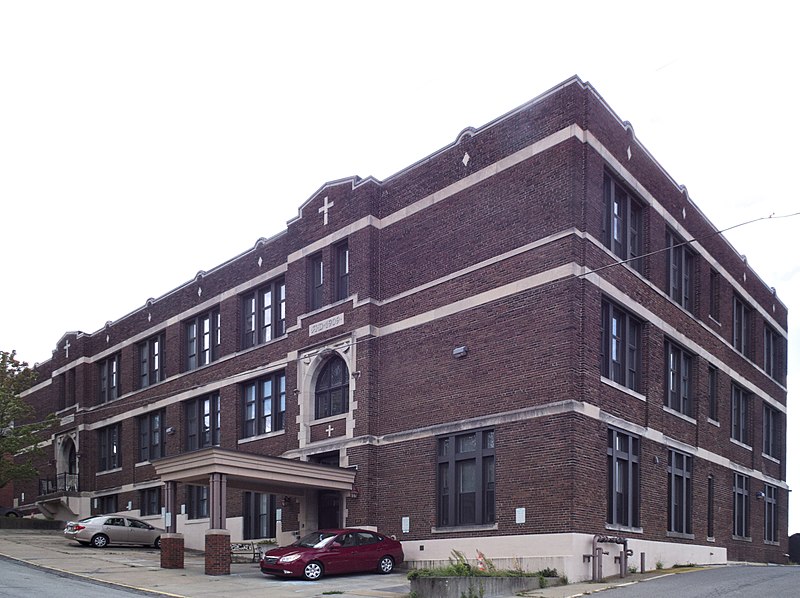
The school closed some time ago, and it is now a retirement home. Resurrection Church is now a worship site of St. Teresa of Kolkata parish, which also includes St. Pius X church in Brookline and St. Catherine of Siena in Beechview.

Now the Graceland Community Church. This old Episcopal church is a frame structure sheathed in Perma-Stone or some similar artificial siding. Old Pa Pitt does not know the history of the building, but from old maps it seems to date to the 1880s. The square windows in the rear part indicate a later extension, after 1923 (according to the maps), and the Perma-Stone may have been applied at the same time.
There is a certain traditional shape for Episcopal churches, and it is often possible to identify, or at least suspect, an old Episcopal church simply by its shape. They tend to be small but rich, with a very steeply pitched roof and Gothic details.

[Correction: In the first version of this article, Father Pitt had carelessly typed “Church of the Resurrection” in the headline. He was thinking of a church of that name in Brookline, which will appear here shortly.]


We saw the 1884 Arsenal Bank earlier from across Butler Street. Here is the 43rd Street side of the building, which we can see clearly thanks to the disappearance years ago of the neighboring buildings.

A dignified industrial building now converted to loft apartments. It was built in the 1890s as a machine shop for the Bair & Gazzam Manufacturing Company, and by 1910 it belonged to the Ruud Manufacturing Company, makers of those marvelous automatic water heaters. The style is very much in line with the industrial Romanesque that was popular in the late 1800s; but if we look carefully at the arches on the ground floor, we notice that they are very subtly pointed.
Father Pitt does not know the whole history of this building, but it looks as though the top two floors were a later addition.
